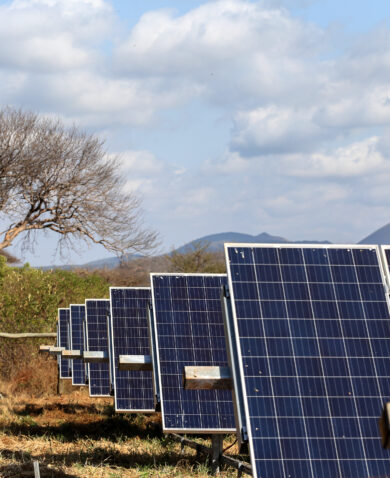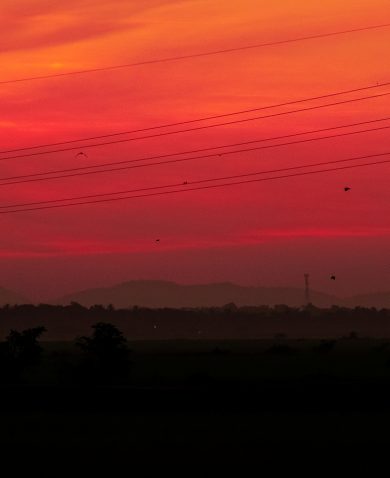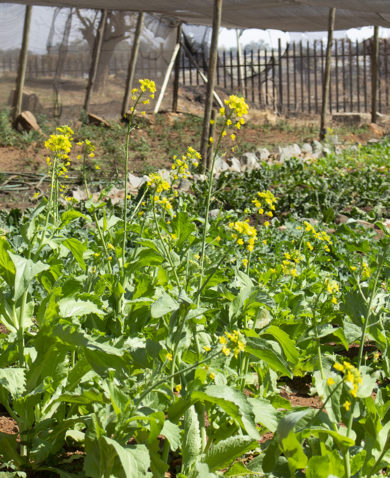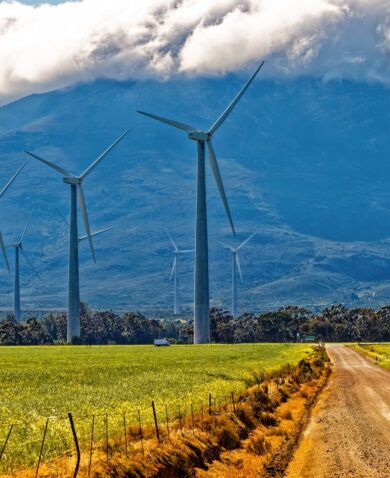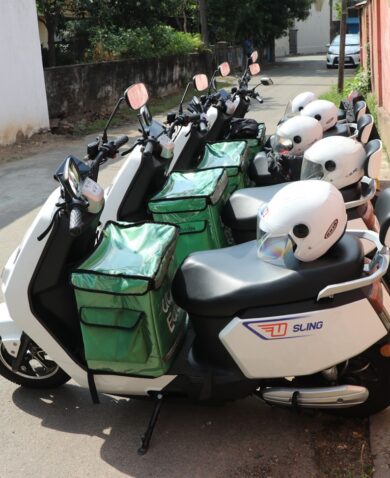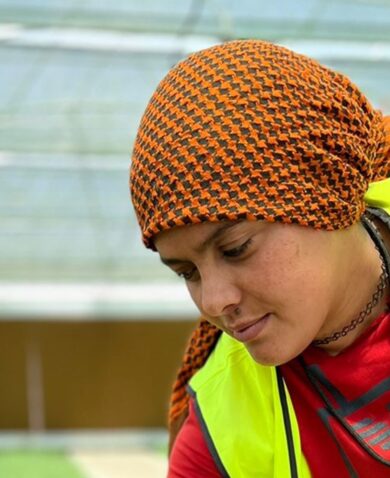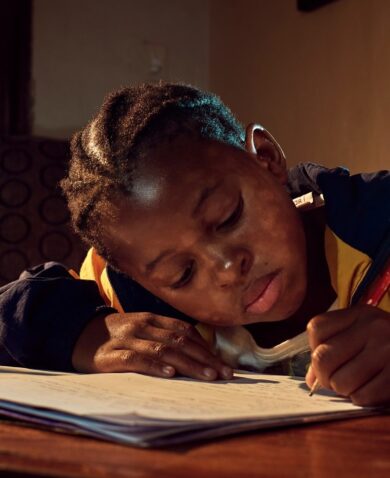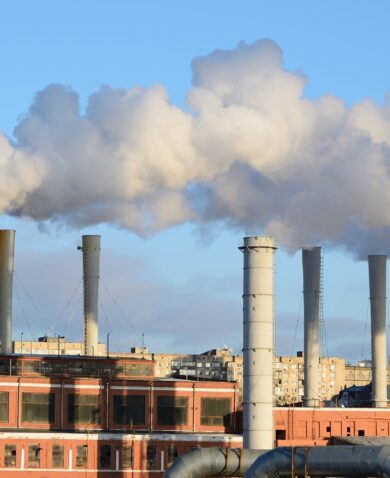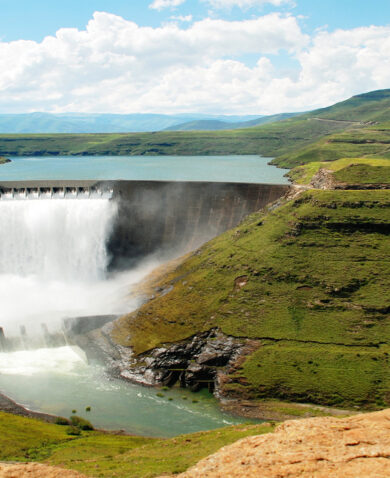
3 Questions with Anna Pettee on Engaging Youth in Clean Energy
July 15, 2024 | 4 Minute ReadHow can development practitioners center youths’ experiences and increase their opportunities in global sustainable energy transitions?
The world’s youth stand to benefit the most from actions we take today to address the underlying drivers of climate change – and risk facing compounded vulnerabilities and severe consequences if we do not act now. Transforming national energy systems through expanded applications of renewable energy solutions is critical to shift climate change drivers while meeting global energy needs that drive livelihood generation. The International Renewable Energy Agency (IRENA) estimates that improved investment in global sustainable energy transitions could yield over 42 million renewable energy jobs, 21 million jobs in energy efficiency, and 15 million jobs in systems flexibility by 2050. However, countries continue to face labor shortages in critical clean energy professions amid rapid transitions, especially in distributed renewable energy systems that are necessary to alleviate energy poverty. To propel and sustain sustainable energy transitions, countries must move faster to ensure appropriate training opportunities translate to the right clean energy jobs.
In 2022, Chemonics and women-owned small business Unbounded Associates collaborated with youth around the world to develop the Centering Youth in Green Workforce Development Action Guide for development practitioners to more effectively develop youth-centered and youth-responsive green workforce development initiatives. Two years later, we are excited to launch an addendum to the Action Guide focused on how development programs can equip young people with the necessary skills to participate actively in sustainable energy transitions by increasing clean energy learning-to-earning employment and entrepreneurship pathways.
Watch as Anna Pettee, senior program manager with Unbounded Associates, and co-author of the Clean Energy Annex, discusses strategies for fostering youths’ increased engagement and leadership in clean energy:
You can also read Anna’s interview in full below:
1. What does the futurescape of youth-led global sustainable energy transitions look like?
The future of the clean energy sector is bright! 13.1 million direct and indirect jobs were created in the renewable energy sector in 2022 in solar, hydropower, biofuel, and wind. By 2030 and 2050, renewable energy jobs are expected to reach respectively 30 and 42 million, based on IRENA’s Transforming Energy Scenario. Millions of new jobs are expected in the coming decades with the largest amount of direct job growth projected to take place in Sub-Saharan Africa.
In our research and discussions with young people around the world, youth are on the forefront of clean energy transitions, especially in places where energy is needed the most. Strengthening what we call “learning-to-earning pathways” is critical to ensure that as young people enter the workforce or develop emerging clean energy technologies enterprises, they are positioned for success through the right technical training and enabling conditions. In many countries, youth entrepreneurs are leading clean energy transitions by bringing renewable energy solutions to their communities and creating local jobs, but they need more funding, technical support, and well-trained job candidates to grow and scale their businesses.
In terms of employment opportunities, youth often face barriers in accessing clean energy jobs, including a lack of green learning opportunities, a need for better coordination between education institutions and employers, and a lack of financial support for youth entrepreneurs. For energy transitions to work and work for everyone, we need to strengthen coordination across and within the public and private sector to improve training and employment opportunities, create channels to financially support youth entrepreneurs, and establish government policies that promote green job creation. Gender responsive practices should also be adopted to attract and retain women in the clean energy sector.
2. How can national education and training landscapes be improved to support the development of a qualified renewable energy workforce to achieve renewable energy goals?
Our landscaping of clean energy learning-to-earning pathways found that efforts to update and better align national education and training systems with clean energy workforce demands can be slow to keep up with rapid changes in the clean energy sector, and that private and non-profit clean energy organizations can complement and supplement education sector changes by providing on-the-job training for young people regardless of their previous education and training backgrounds.
The KYA Energy Group in Togo is a great example of the role NGOs can play in upskilling young people to join the clean energy sector, especially young women who are underrepresented in the field. We also know that increasing and diversifying fields of study offered by post-secondary education and training institutions is essential to build emerging solar and wind sectors.
We looked at the situation for youth in Sri Lanka and found that less than half of the courses of study that contribute to robust wind and solar sectors are offered in the country, with the large majority concentrated in the Western Province. To improve training landscapes, we need to ensure that the availability and accessibility of renewable energy education and training opportunities are socially and geographically equitable, and support young people’s educational transitions from lower secondary to additional schooling to promote more uptake of post-secondary education and training pathways in wind, solar, and other renewables.
3. What are examples of effective strategies to maximize inclusive opportunities that enable young women in all their diversity to enter into a predominantly-male clean energy sector?
Achieving a just clean energy transition that provides opportunities for all youth to find meaningful work in the sector means breaking down barriers that have historically left out women and other underrepresented social groups in the energy sector at large. Effective strategies from our discussions with young leaders in renewable energy sectors include providing targeted opportunities for young women to access clean energy education and training, and identifying women champions in clean energy who can inspire and recruit more women to the field.
We also found that debunking gendered myths around jobs in clean energy not being “safe” or fit for women, making workplaces safer and more accessible for women, and making culturally contextualized accommodations for women – working around AND working against gender norms that prevent women from joining the sector – are effective means of fostering the structural changes needed to improve inclusion of young women in clean energy.
Banner image caption: The Clean Energy Annex to the Centering Youth in Green Workforce Development Action Guide focuses on how development programs can equip young people with the necessary skills to participate actively in sustainable energy transitions by increasing clean energy learning-to-earning employment and entrepreneurship pathways.
Posts on the blog represent the views of the authors and do not necessarily represent the views of Chemonics.



